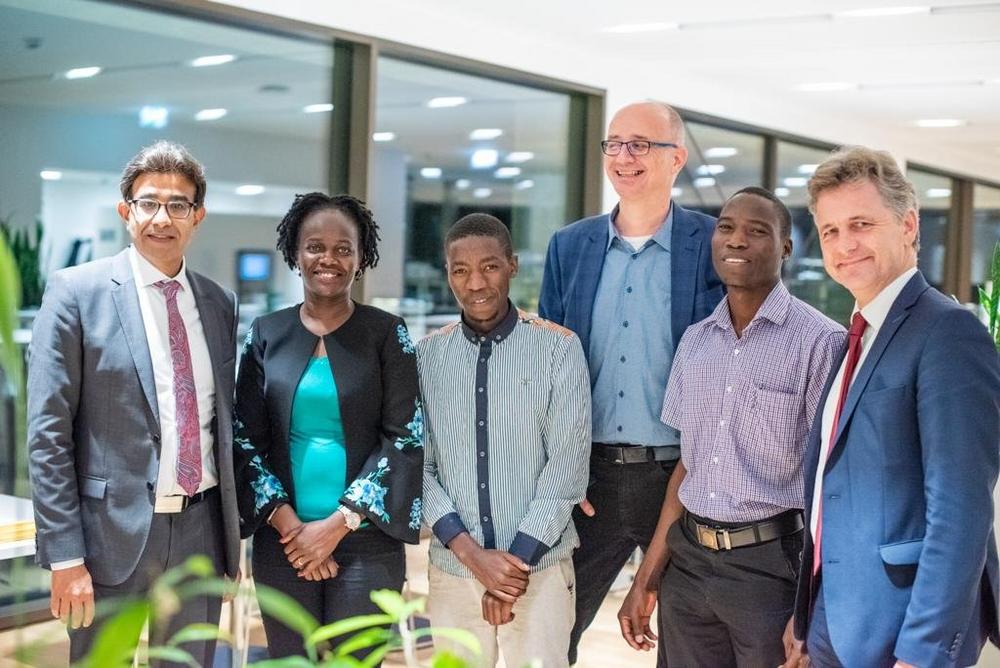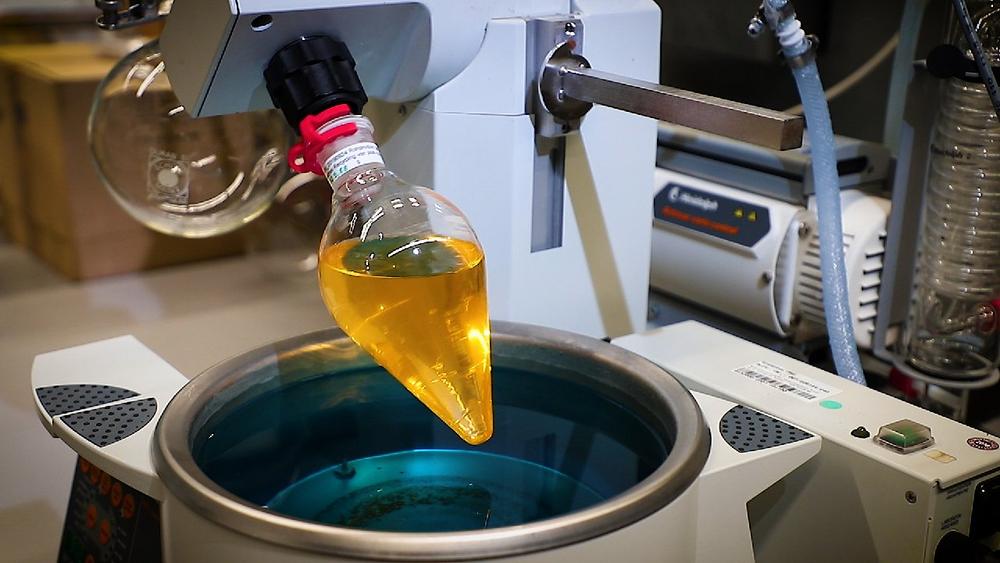-
New innovation ecosystem launched to support market access for bio-based consumer products
The packaging, automotive, and other consumer goods industries have received EUR 14.5 million funding from the European Union’s Horizon 2020 programme for a project aiming to replace petroleum-based goods with bio-based products. The INN-PRESSME project will function as an ecosystem, involving the development of recyclable and/or biodegradable packaging, energy, and vehicle solutions and other consumer goods. Coordinated by VTT Technical Research Centre of Finland, the project involves 26 other European organisations from nine European countries. The core of the new INN-PRESSME ecosystem (Full name, “Open innovation ecosystem for sustainable plant-based nano-enabled biomaterials deployment for packaging, energy/transport, and consumer goods”) is comprised of pilot devices owned by ten European partners. VTT´s…
-
Digitalized HP-RTM process chain allows significant cost reduction through data-based quality control and predictive maintenance
High-pressure resin transfer molding (HP-RTM) is used to produce high-quality applications, e.g. in the automotive industry. The components have a very high lightweight potential due to good material properties at low weight and are suitable for structural automotive parts, e.g. roof, doors and trunk lids. The HP-RTM process is suitable for series production of composite components in terms of cycle times, but still poses a challenge in terms of robustness and reliability. This characteristic leads to relatively high reject rates and makes the process unprofitable for many applications. A major reason for this is the manual process data acquisition. A transfer of process data along the individual process steps as…
-
Decentralized energy supply with renewable energies in Uganda – a new project funded by the German Federal Ministry for Education and Research (BMBF)
Uganda’s Vision 2040 aims at building a green economy and clean environment where the ecosystem is sustainably managed, and the livability of the urban systems greatly improved. This calls for building a modern energy sector that creates economic opportunities and enhances access to green energy at affordable price which can be achieved by bridging the gap between industry and the academia, and commercialization of research and development. Currently, there is a considerable need for renewable energy technologies in Uganda. Uganda’s electrification rate is 28%. In 2018, it was estimated that 6.5 million households had no electricity connection. Renewable energy sources have dominated the expansion of energy supply in Uganda since…
-
Neues Projekt „Dezentrale Energieversorgung mit erneuerbaren Energien in Uganda“ – gefördert vom Bundesministerium für Bildung und Forschung (BMBF)
Ugandas Vision 2040 hat den Aufbau einer grünen Wirtschaft und eine saubere Umwelt zum Ziel, in der das Ökosystem nachhaltig genutzt und die Lebensqualität der Städte stark verbessert wird. Dies erfordert den Aufbau eines modernen Energiesektors, der wirtschaftliche Möglichkeiten schafft und den Zugang zu grüner Energie zu erschwinglichen Preisen verbessert. Dies kann durch die Überbrückung der Kluft zwischen Industrie und Wissenschaft und die Kommerzialisierung von Forschung und Entwicklung erreicht werden. Derzeit besteht in Uganda ein erheblicher Bedarf an Technologien für erneuerbare Energien. Der Elektrifizierungsgrad Ugandas liegt bei 28%. Im Jahr 2018 hatten schätzungsweise 6,5 Millionen Haushalte keinen Stromanschluss. Erneuerbare Energiequellen dominieren seit 2013 den Ausbau der Energieversorgung in Uganda. Von…
-
Lighter cars by using recyclable bio-based polymer parts
To reach the climate goals, energy and fuel consumption of vehicles has to be reduced. This can be achieved by reducing the vehicle weight by substituting metal parts by polymer parts. At the same time, these parts need to be stable and safe. One option to ensure this is to use fibre reinforcements in polymer parts. Many of the polymers used today are not recyclable, which is an ecological and economical drawback. The consortium of the EU-funded project ECOXY found a solution by using recyclable bio-based matrices, thus addressing two topics at the same time: lightweight and recyclability. In this project 13 partners from industry and research work together to…
-
Upcycling of Post-Consumer PLA Waste: A Gateway to „Circular Bio-Economy“
Designed for performance and durability, synthetic plastics have become indispensable as “materials of every-day use”. However, their indiscriminate disposal has led to an acute problem of plastic pollution. In order to solve this issue, the European Union not only tries to implement a circular system to reuse, repair and recycle plastics (circular economy) but it also aims to produce plastics of renewable resources (bio-based plastics). Poly-lactic acid (PLA) is one of the most promising and frequently used polyesters from this category. Due to its flexible and versatile applications ranging from disposable cutlery and degradable sutures to rigid packaging and extrusion coatings, the global production capacity of PLA is expected to…
-
Aufwertung von Post-Consumer-PLA-Abfällen: Ein Tor zur »Zirkulären Bio-Wirtschaft«
Aufgrund ihrer Leistungsfähigkeit und Haltbarkeit sind synthetische Kunststoffe als »Materialien des täglichen Gebrauchs« unverzichtbar geworden. Ihre unterschiedslose Entsorgung hat jedoch zu einem akuten Problem der Kunststoffverschmutzung geführt. Um dieses Problem anzugehen, versucht die Europäische Union nicht nur, ein Kreislaufsystem zur Wiederverwendung, Reparatur und Wiederverwertung von Kunststoffen (Kreislaufwirtschaft) einzuführen, sondern sie strebt auch die Herstellung von Kunststoffen aus erneuerbaren Ressourcen (biobasierte Kunststoffe) an. Polymilchsäure (PLA) ist einer der vielversprechendsten und am häufigsten verwendeten Polyester dieser Kategorie. Aufgrund seiner flexiblen und vielseitigen Anwendungen, die von Einwegbesteck und abbaubarem Nahtmaterial bis hin zu starren Verpackungen und Extrusionsbeschichtungen reichen, wird erwartet, dass die weltweite Produktionskapazität von PLA bis zum Jahr 2023 auf 826.000 Tonnen…
-
Deutschland als führenden Technologiestandort für die Nutzung von Wasserstoff als Energieträger entwickeln
. Prof. Dr. Karsten Pinkwart, Fraunhofer-Institut für Chemische Technologie, in den Nationalen Wasserstoffrat der Bundesregierung berufen Auf Basis erneuerbarer Energie erzeugter „grüner“ Wasserstoff wird ein wesentliches Element der Sektorkopplung sein und damit erheblich zur Reduktion der Treibhausgasemissionen beitragen. Die Bundesregierung hat deshalb eine Wasserstoffstrategie entwickelt, um Deutschland als führenden Technologiestandort für die dabei entstehenden neuen Märkte zu entwickeln. Der nationale Wasserstoffrat wird die Bundesregierung bei dieser Zielsetzung unterstützen. „Das Ziel muss es sein, erneuerbar erzeugten Wasserstoff für Anwendungen in der Mobilität sowie als Grundstoff der chemischen Industrie zur Verfügung zu stellen“, sagt Karsten Pinkwart vom Fraunhofer-Institut für Chemische Technologie ICT in Pfinztal und Professor im Fachgebiet Elektrochemische Energiespeicher an der…
-
Upcycling of Post-Consumer PLA Waste: A Gateway to „Circular Bio-Economy“
Designed for performance and durability, synthetic plastics have become indispensable as “materials of every-day use”. However, their indiscriminate disposal has led to an acute problem of plastic pollution. In order to solve this issue, the European Union not only tries to implement a circular system to reuse, repair and recycle plastics (circular economy) but it also aims to produce plastics of renewable resources (bio-based plastics). Poly-lactic acid (PLA) is one of the most promising and frequently used polyesters from this category. Due to its flexible and versatile applications ranging from disposable cutlery and degradable sutures to rigid packaging and extrusion coatings, the global production capacity of PLA is expected to…
-
Aufwertung von Post-Consumer-PLA-Abfällen: Ein Tor zur „Zirkulären Bio-Wirtschaft“
Aufgrund ihrer Leistungsfähigkeit und Haltbarkeit sind synthetische Kunststoffe als "Materialien des täglichen Gebrauchs" unverzichtbar geworden. Ihre unterschiedslose Entsorgung hat jedoch zu einem akuten Problem der Kunststoffverschmutzung geführt. Um dieses Problem anzugehen, versucht die Europäische Union nicht nur, ein Kreislaufsystem zur Wiederverwendung, Reparatur und Wiederverwertung von Kunststoffen (Kreislaufwirtschaft) einzuführen, sondern sie strebt auch die Herstellung von Kunststoffen aus erneuerbaren Ressourcen (biobasierte Kunststoffe) an. Polymilchsäure (PLA) ist einer der vielversprechendsten und am häufigsten verwendeten Polyester dieser Kategorie. Aufgrund seiner flexiblen und vielseitigen Anwendungen, die von Einwegbesteck und abbaubarem Nahtmaterial bis hin zu starren Verpackungen und Extrusionsbeschichtungen reichen, wird erwartet, dass die weltweite Produktionskapazität von PLA bis zum Jahr 2023 auf 826.000 Tonnen…










